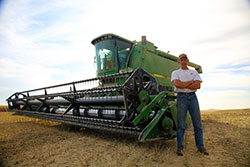|
A No-tillage Legacy Moment,
Investigating Seed Row Saturation with Planters.
A good look at
planted wheat with SRS.
Seed Row
Saturation, SRS at 50 to 100 gallons per
acre at 20 inch seed row spacing.
Exactrix
Mustang TAPPS banding to follow shortly along the row. Banding 7 to
8 deep in No-tillage.
Dryland
Wheat at Hugoton, Oct. 27, 18 at Bumper Flats.
Jay and
Joel McClure.
Bumper
Flats is about 3 miles from Joel’s homestead house
and 5 miles from Rattlers Corner where Winter Canola
has been under review.
 1
1
Joel and Jay McClure, Deere 1790 Planter set up on 20 inch
with Precision Planting equipment installed. Milo plates were used
to plant 12,500 seeds per lb. from Kramer Seed Co.
 2
2
Hello
world, it is a beautiful day in my field with 225,000 population
on every acre. I have high quality soldiers on every acre marching
off to war.
“My eyes
have seen the glory”. My soldiers are singing “The Battle Hymn Of
The Republic”.
This is
healthy wheat on the Great Plains.
Who said
the seed rate was “a bushel and a peck”? A peck will do finely. The
left over bushel can make more cakes, noodles and bread.
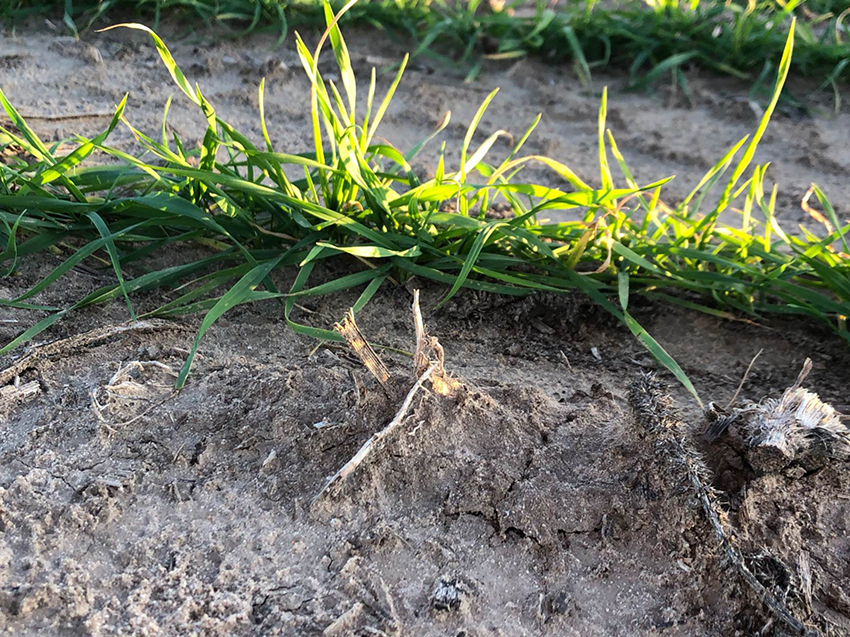 3
3
October 27, 18. McClure, Bumper Flats, Jay and Joel
McClure reporting with the camera.
Ready for
hybrid winter wheat at $8.00 per acre seed cost?
A good population would be 225,000 to start with and then go
lower in testing but SRS must be in service.
Planters
space the seed closely together and SRS becomes highly functional
due to the opener and seed tube design. The 1790 Deere planter’s
soil V and soil W slot force the seed tightly together. The
seedlings race the roots deeper and compete completely for light due
to the metered seed and correct in row spacing. The Swanson offset
leading double disc metering opener has proved that point with a
unique soil W and metering of the seed by the opener.
Hill
planting will provide similar results for spring barley.
Planters
also have good row cleaners that remove residue from the row area.
The residue removed can be straw and corn stover or it can be soil
active chemicals.
The row
cleaners must just skim the soil surface as shown in the above
picture.
This field
also received about 4 inches of rainfall in October early.
Planters
are seldom limited by residue flow at 20 inch spacing. In fact 20
inch corn on 20 inch corn in No-till works very well.
Planters
are also very wide and seed slower to provide 500 to 750 acres per
day at 60, 80 or 90 feet. A 20 inch row space planter at 60 feet is
a big planter.
Another
reason planters are desirable in winter wheat country is the use of
Hybrid Winter Canola for money and for fumigant cover.
Hybrid
Winter Canola is a fumigant crop. Hybrid Winter Canola can be also
used as a cover crop when the price is low and corn is a better
choice in the spring.
Mustang
P-51C openers applying TAPPS allow nutrients to be managed to the
maximum efficiency.
Hybrid
Winter Canola needs no fertilizer if the crop is only for cover and
fumigation.
 4
4
Yes sir,
20 inch spacing is just fine. In drilling winter wheat in
Washington State the USDA-ARS, Dr. Jim Cook discovered that 28 inch
was the down turn in row spacing.
Wheat rows
in 7, 14, 21 yielded the same. At 28 inch rows the wheat yields
dropped 3 per cent.
The test
was completed with a 7 inch double disc drill at Pullman and Lind,
Washington.
Basically
stated 2 out 3 rows were used to control weeds. The third row was
for yield.
Much of our
knowledge on how to raise winter wheat is simply incorrect in
today’s world of hybrid genetics and No-tillage
farming
Mort and
Guy Swanson discovered that more seed rows of winter wheat were
cumbersome to No-tillage. More rows actually lowered yields in
following crops due to cool and wet soils in the spring. The winter
wheat residue produced was too much on 9 inch rows. Thus No-till
farmers started to burn their stubble.
The first
No-till Drill in the PNW “Old Yeller” was set up at 9 inch row
spacing. The drill was then modified with row cleaners to 18 inch
row spacing producing superior performance in winter wheat. Bigger
heads resulted and the straw to grain ratio was improved. For sure
there was more grain and less straw on 18 inch drilled seed row
spacing with offset leading double disc openers that metered the
seed.
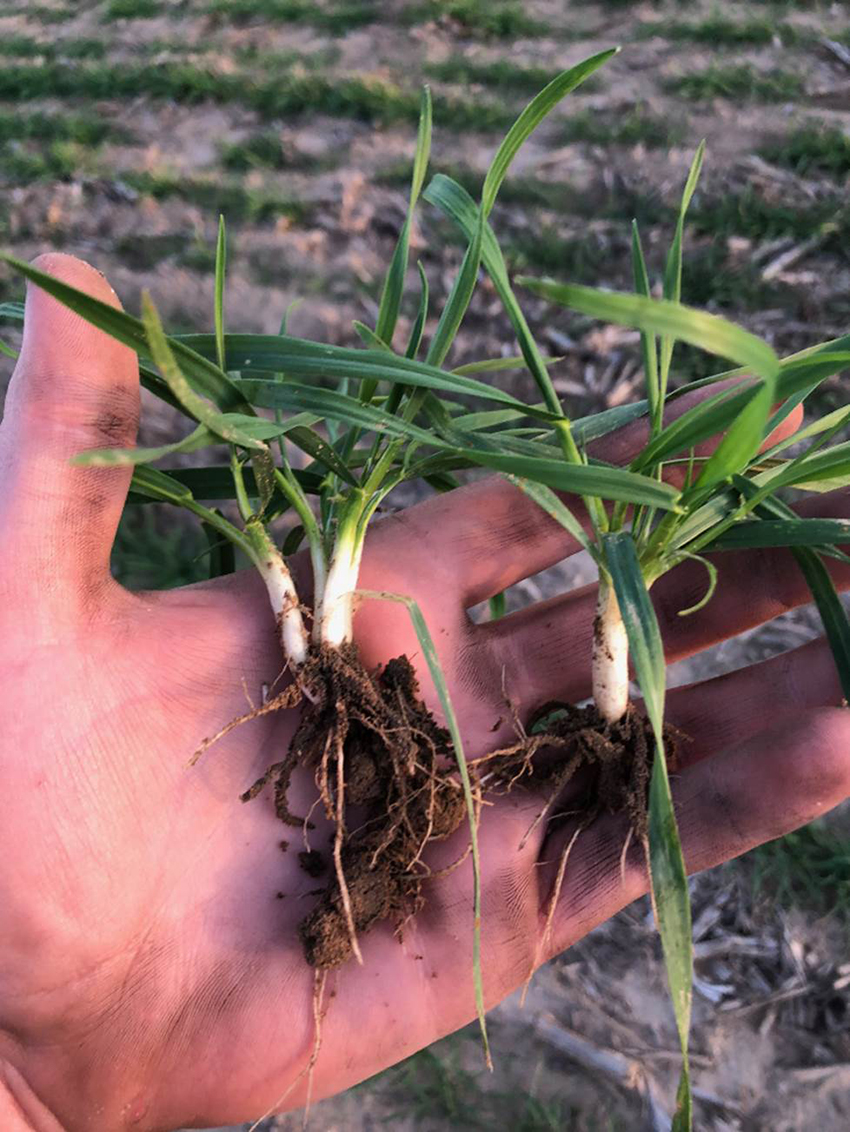 5
5
Drilled wheat in
the background on 10 inch….Planted wheat in hand.
SRS made a
big difference.
SRS flushed
the Abscisic Acid from the seed. This is also referred to as
“Steeping” by maltsters. The design also made a Vapor barrier which
is referred to as a Reverse Feeder Dike.
SRS is also
a form of weed control.
 6
6
20 inch planted rows, Deere
1790 at Hugoton, KS
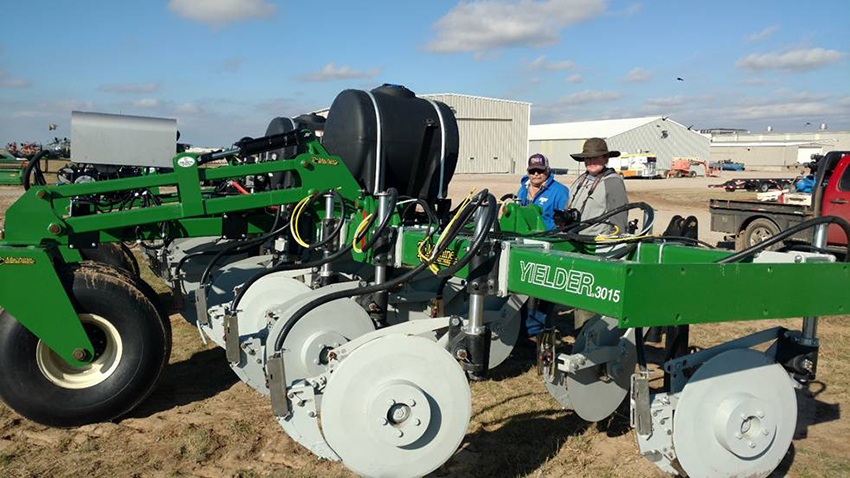 7
7
Ready for
side-dressing winter wheat, Mustangs go deep to 8 inch depth with
No-tillage. TAPPS and TAPPKTS.
Joel and Jay McClure inspect a new Mustang
P-51C tool bar with 25 inch single edge blades at Keating Tractor,
JD dealer at Liberal, KS.
Mustangs will be aligned parallel to the 20
inch rows at 8 inch depth. Askew treatments can also be made.
Weed control is anticipated to be better
with bands located 1 to 2 inches to the side of the rows.
About ½ the nutrient is required.
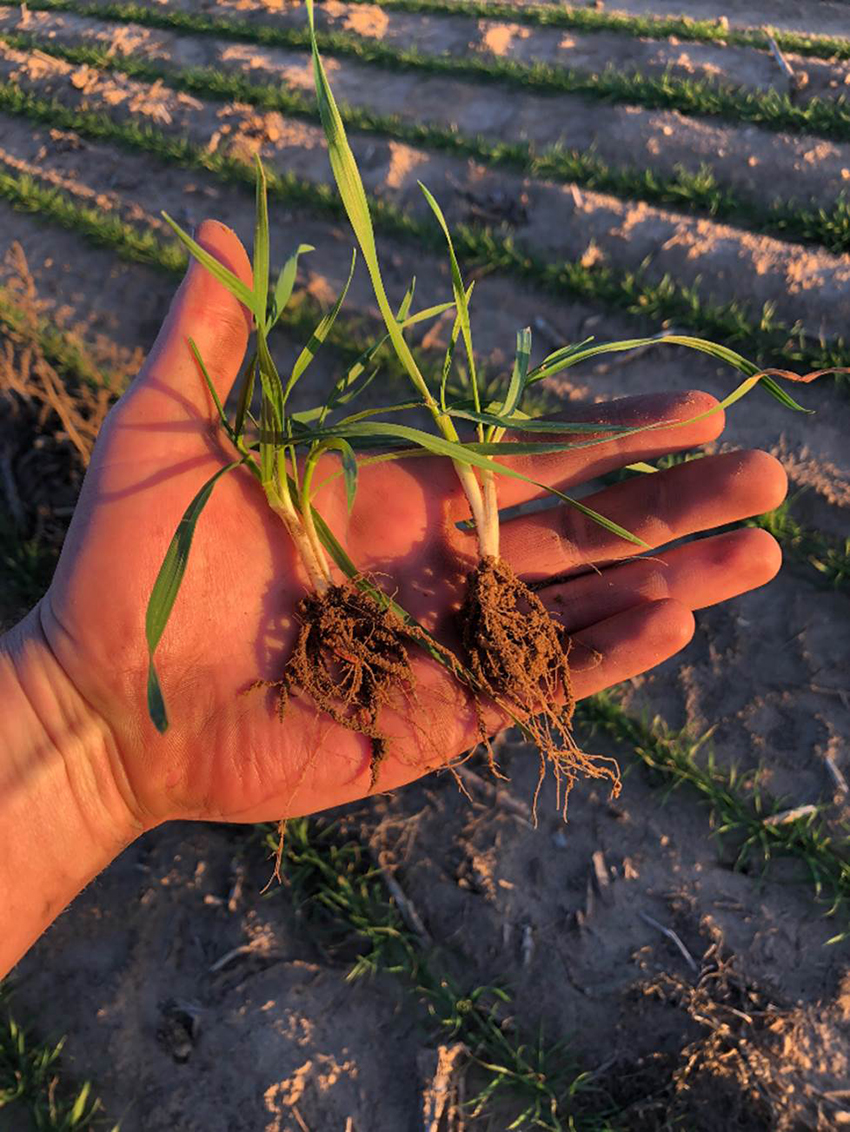 8
8
A good fall start.
The Exactrix designed SRS flushed the
Abscisic Acid from the seed and combined with the quick start make
the 20 inch seed rows emerge together.
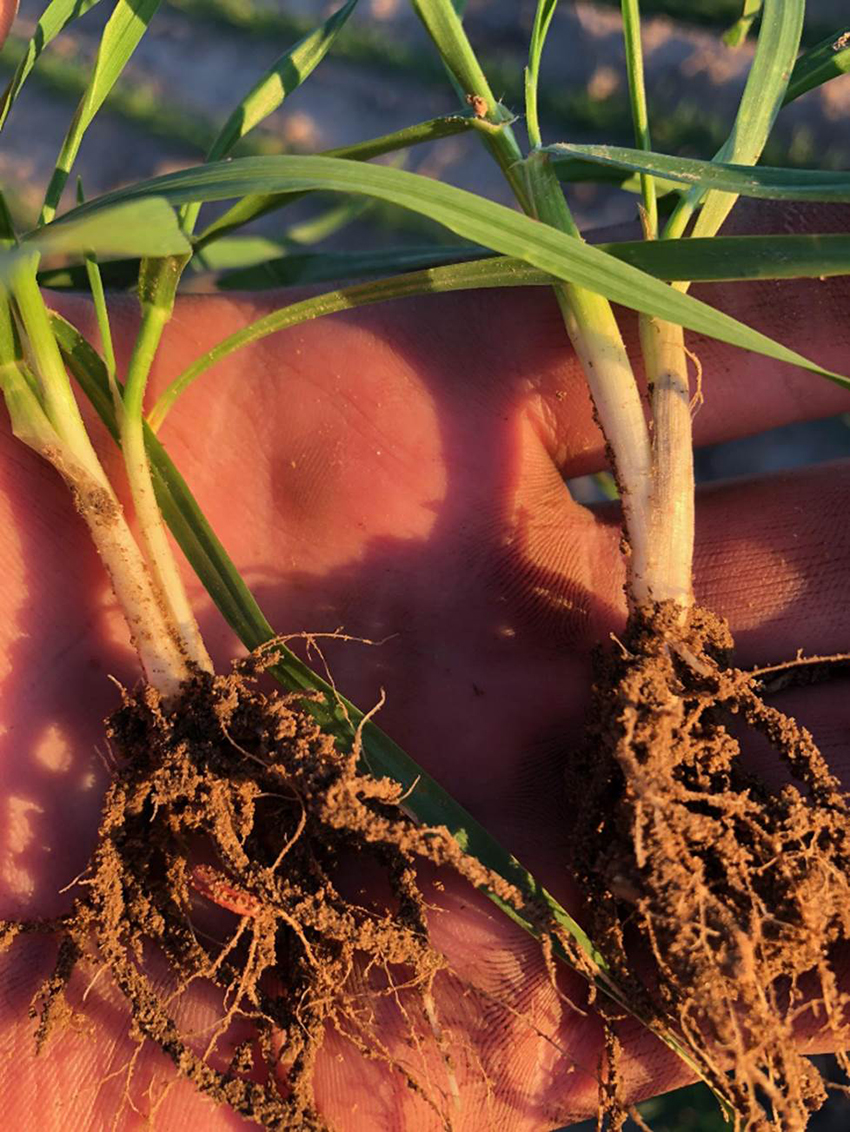 9
9
Root
development about
Oct 27, 18
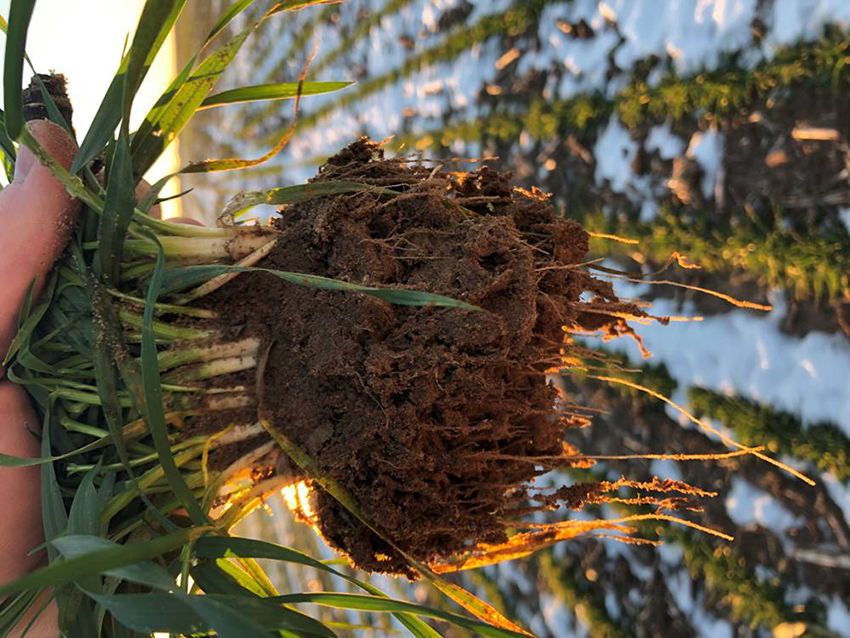 10
10
Root development of SRS as planted 20 inch wheat, Nov. 10, 18.
Photos by Jay McClure.
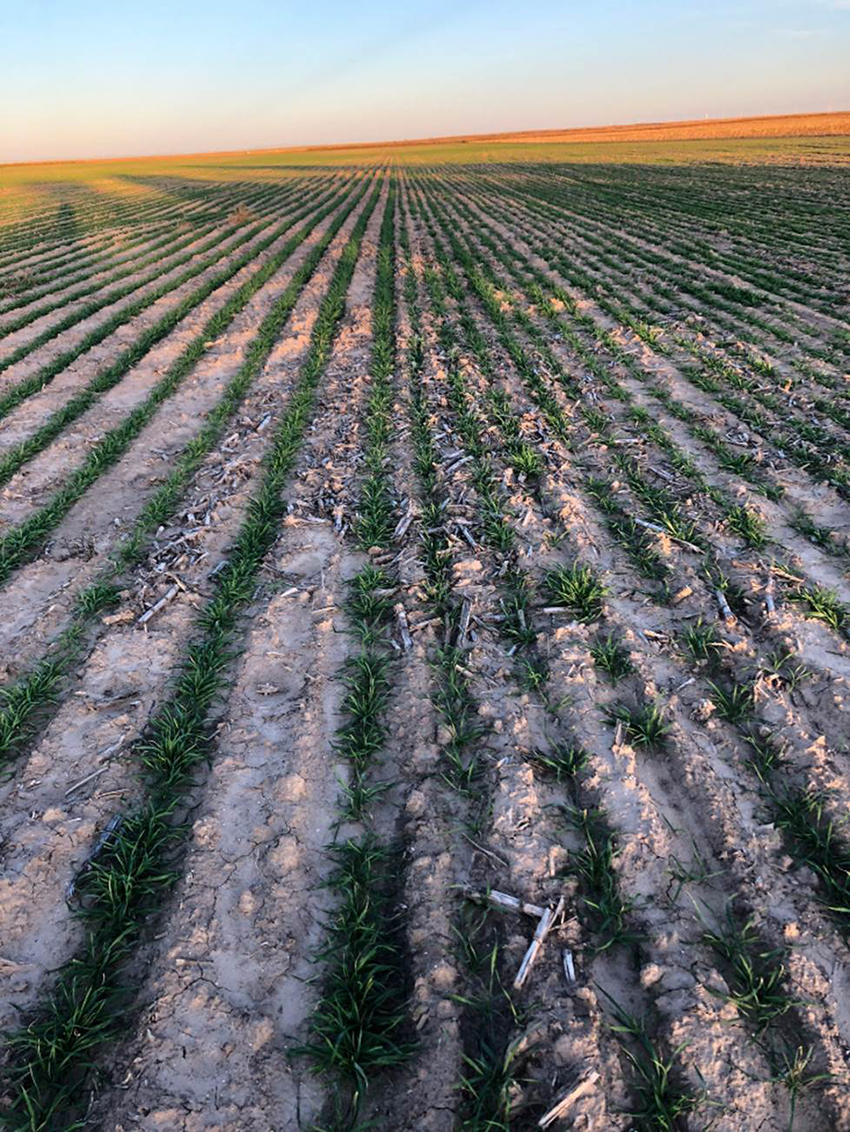 11
11
Oct 27, 18. Comparing Planters to drills.
Drilled 10 inch wheat on the right without
SRS. 20 inch planted wheat on the left with SRS.
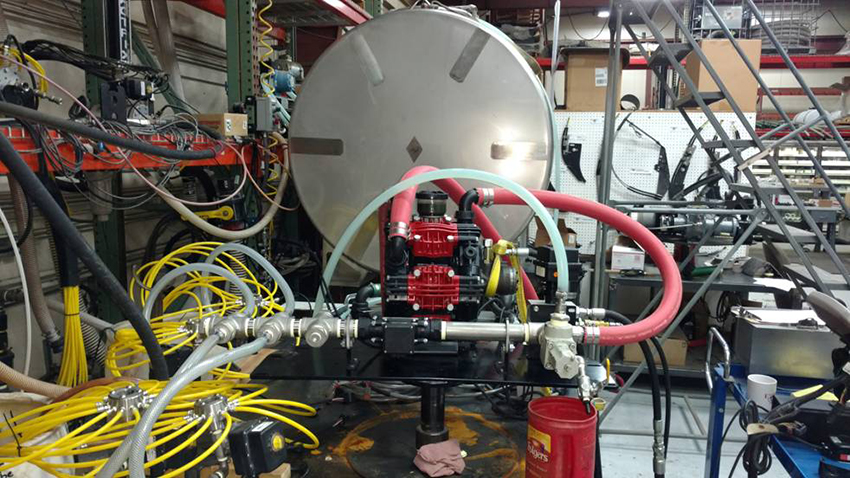 12
12
Rated as one of the Top Ten Technical
Achievements over the last 50 years and ideal for No-tillage
farming.
Controlling weeds with planters, row
cleaners and Exactrix® SRS
water in the row at 50 to 100 gallons per acre.
Row cleaners removed chemical residue and
straw and 50 to 100 gallons per acre of water flushed the Abscisic
Acid from the seed.
No sense raising weeds when it is wheat that
we need.
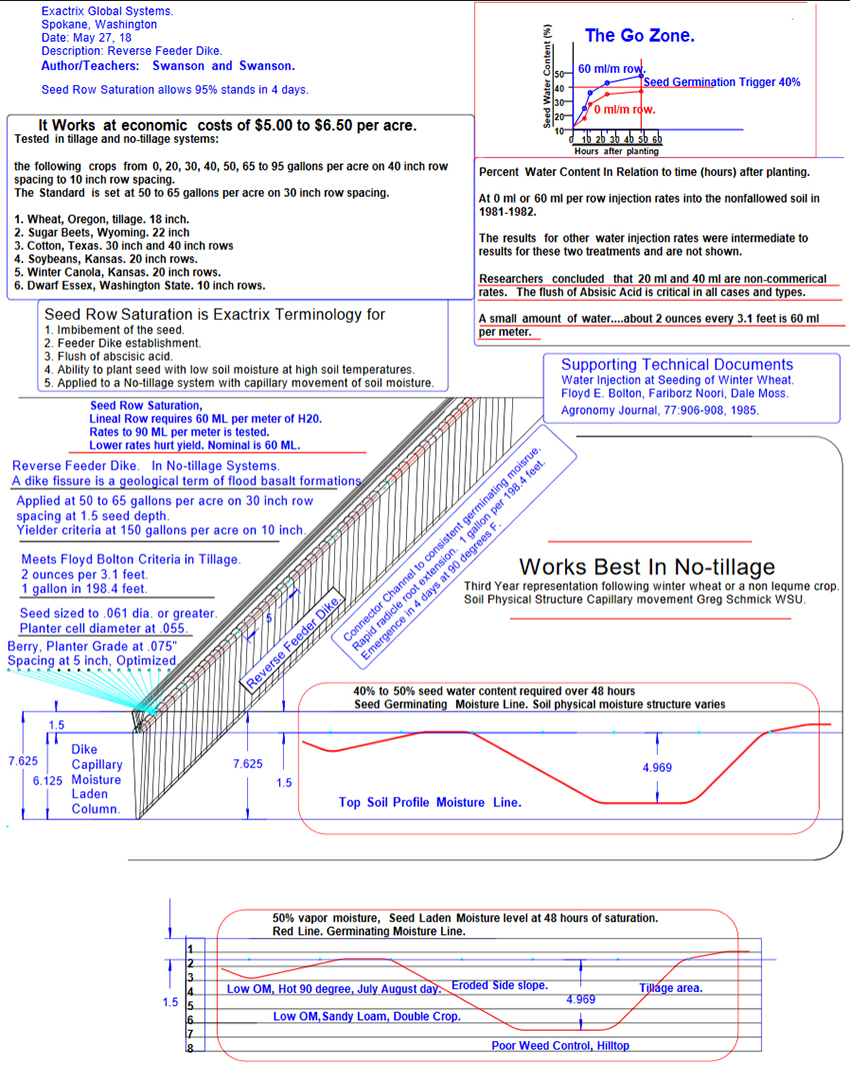 13
13
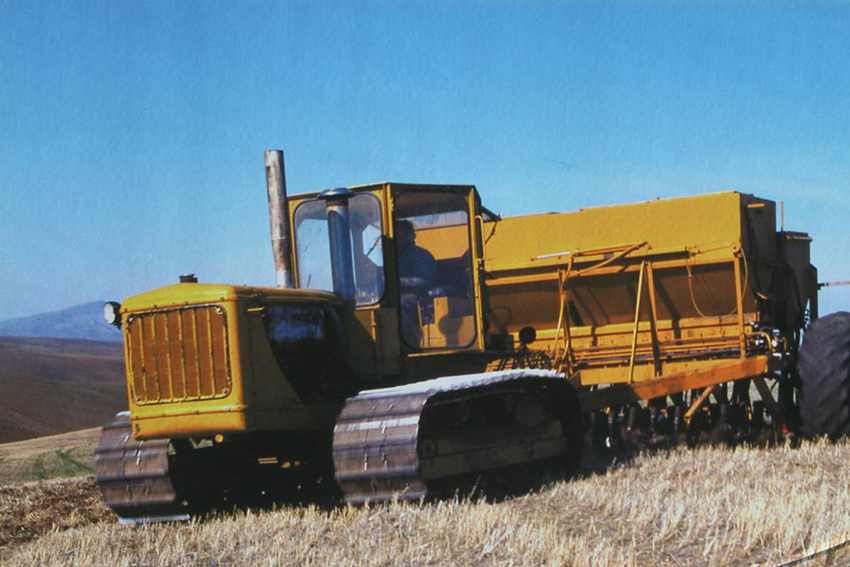 14
14
“Old Yeller” seeding 18 inch winter wheat
with Duff Scuffers. Duff Scuffers cleared the path for the
offset leading disc openers.
Urea was metered to the side of seed row…and
the Duff Scuffers covered the volatile urea band. The volatile urea
was sitting at the surface and covered with duff.
The relationship of Urea in surface bands to
seed rows was not correct. Dr. Fred Koehler, a WSU fertility
expert proposed banding nutrients below the seed rows to get high
utilization of place nutrients.
This was also a backfire since the nutrients
were too close to germinating seed using the 16 inch spacing HZ
split Packer design of drill with extended seed boots. Dr. Gary
Hyde, WSU was involved in this development of modifying the 16 inch
HZ Split Packer.
As per the picture above. In 1978 the Urea
was above the 18 inch seed row in a concentrated 18 inch band. This
technique was a backfire on steep slopes as gravity allowed mobile
urea to reach the seed row.
The 46-0-0 and 40-0-0-6S Urea and Urea Gold
was able to move downward and to the side and into the seed row and
hurt the germination of both winter and spring wheat.
The is last year for Old Yeller in the Fall
of 1979…Nitrate 34-0-0 had been eliminated in 1978 and now Urea was
questionable for top yields in Winter Wheat.
By the 1980 the first Yielder Pioneer drills
banded nutrients below the seed row and to the side on 7.5 inch
spacing. The Urea bands were typically 4 inches in depth and between
the 7.5 inch rows.
By 1983 the use of Urea was ended with the
Yielder® Drills. Yielder Drills banded nutrients on paired rows
using Aqua Ammonia and Anhydrous Ammonia and 16-20-0-14S in a common
band.
Then in 1983 and 1984 yields started to jump
using Yielder® Paired Row seedings of 5/15 and 5/10.
Yielder Paired Row 5/15 is seldom duplicated
in wheat production.
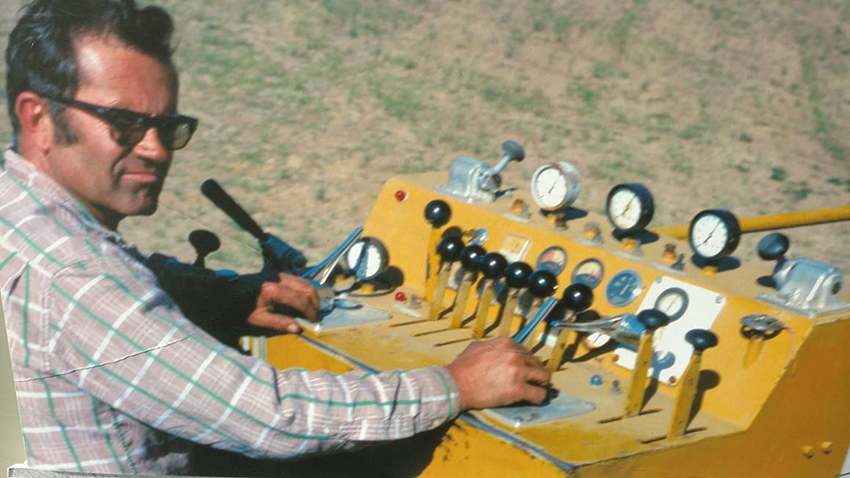 15
15
What about
wide seed rows….Good weed control is required in a wide space, 18
inch seedings of winter and spring wheat.
SRS also helps to control weeds under
pivots. The wheat gets the water and weeds starve.
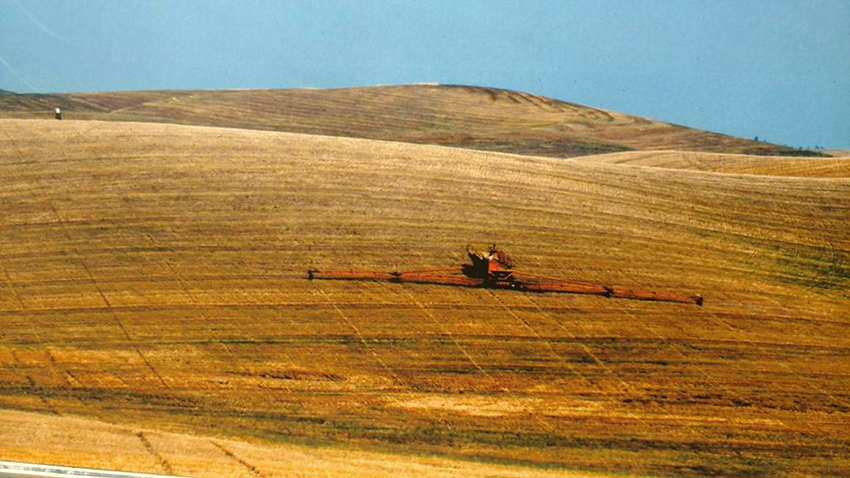 16
16
The motorcycle made the correction at the
ridge tops. The big engine held the
ground speed constant on 3 D-6 track frames that oscillated
independently.
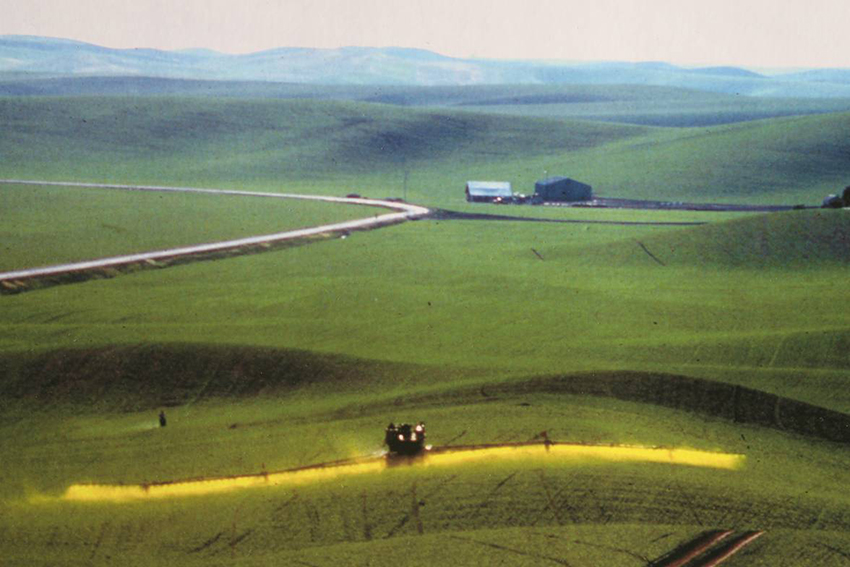 17
17
Weed control of peas is accomplished with
FMC, Sinox W, Dinitro which was a differential wetting agent
desiccant.
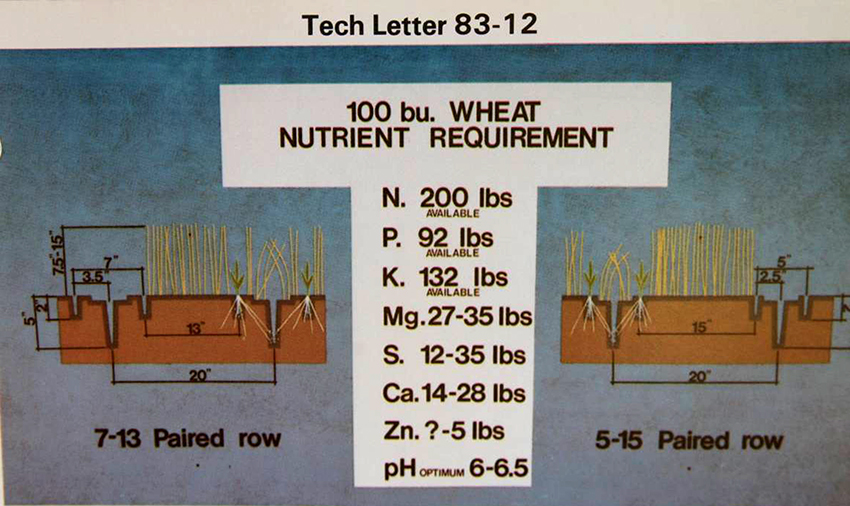 18
18
How the world has changed since 1983.
Banding to
a 5 inch depth between
2 rows 5
inches apart produced the highest technical yields of the time in
1983 thru up year 2,000.
Yielder
Paired Row provided a major change in No-tillage in the western US.
In 1983 the recommended rate with old fashioned metering equipment
in No-tillage and Tillage required a lot more nutrients be applied.
Today…that recommendation is 100 lbs. to 120 lbs. N as
NH3, 20 lbs. P as 10-34-0 and 20 lbs. S as 12-0-0-26S with 1 lb.
Zinc to raise 100 bushels per acre winter wheat in No-tillage
Exactrix Mustang Banding at the 7 inch to 8 inch depth.
The P-51 Mustang Deeper Bands are key with 12 and 15 inch bands of
TAPPS with Micros applied at 1%CV in an acid/base reaction.
COMING
UP..
Exactrix®
Nutrient Management Seminar.
Improving the Net
Margin 12% to 15% under 2019 production pricing.
Jan. 16 and 17, 2019, Hugoton, KS.
In field demonstrations and outstanding speakers.
You must register between Dec. 10 to Dec. 30.
Room at the Best Western Hugoton.
1-620-544-7766,
$85 single, $95 double.

Your Great Plains Reporter,
Guy J Swanson.
|




















